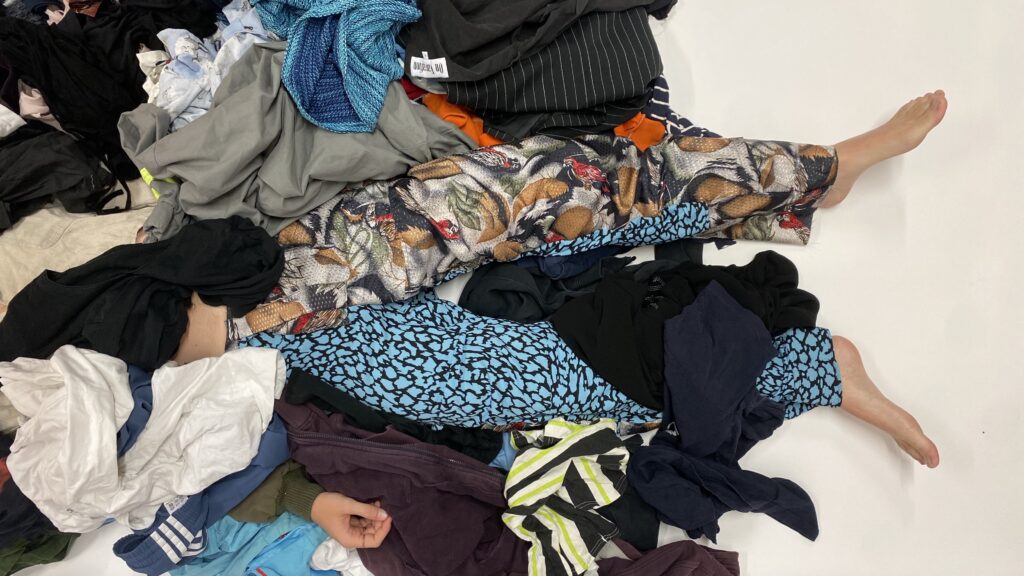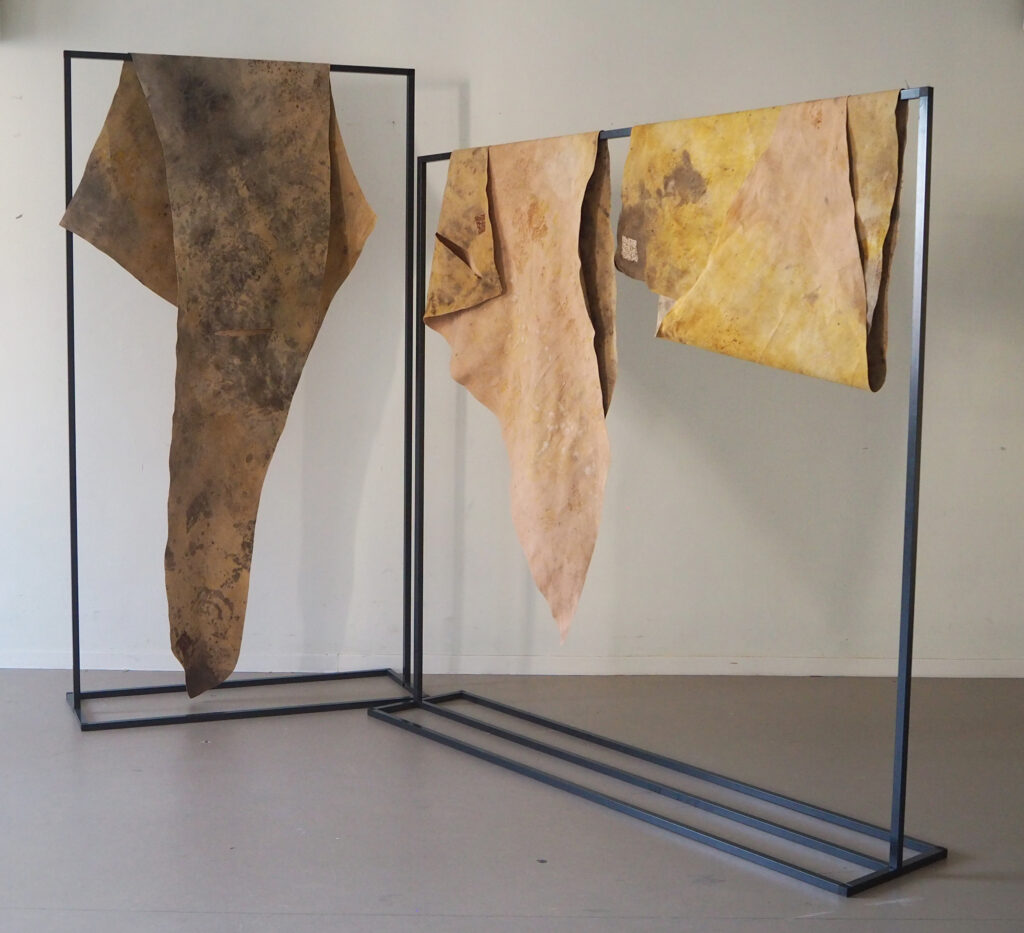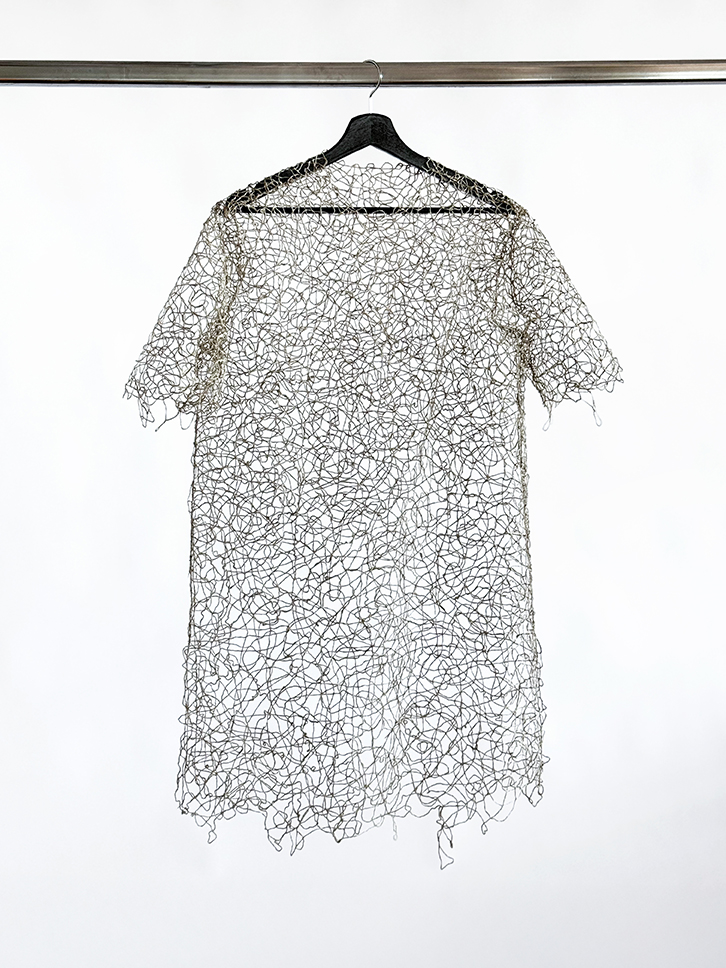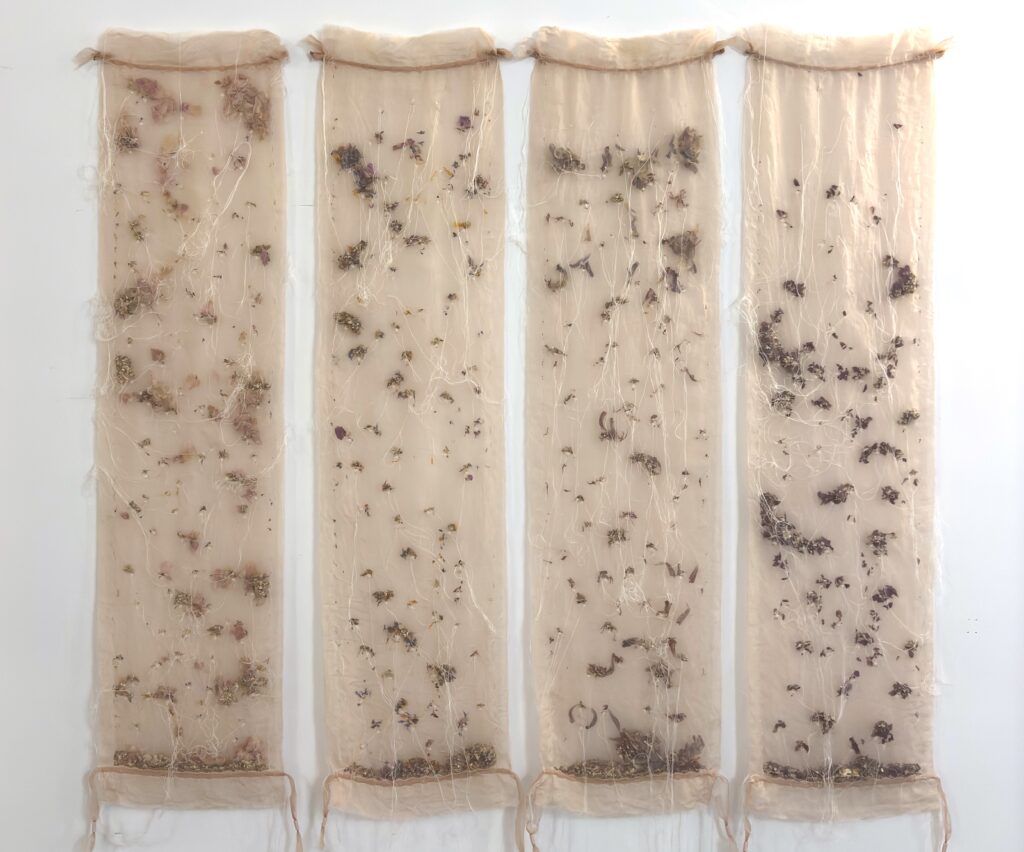
A project course held weekly from March – June 2024, led by Julia Moser, Katharina Sand, Tim van der Loo, Irene Posch.
COURSE DESCRIPTION:
What will the fashion of tomorrow look like? What stories do sustainable materials tell? And how can we translate our visions into poetic, aesthetic and environmentally conscious designs? In this course, we focus on developing, planning, realizing and presenting our own fashion project, which can optionally be submitted to the Fashion Frontier Program.
Students will go through all stages from idea to realization. The course will be accompanied by insights from fashion designer Yuima Nakazato – the founder of the Fashion Frontier Program – who will provide background information on the competition and inspiration for innovative, visionary designs. The aim is to develop a unique concept and project that impresses through aesthetic innovation and sustainability.
The course includes:
IN-DEPTH RESEARCH AND POTENTIAL DEVELOPMENT: How can we incorporate personal strengths and interests into a project?
VISION STRENGTHENING AND CONCEPT DEVELOPMENT: From the initial inspiration to the finalised idea.
STORYTELLING: How do you tell stories through clothing?
EXPERIMENTATION AND PROTOTYPING: Creating designs, developing models, visualising ideas, working with materials – especially waste materials and regional resources.
PRACTICAL PROJECT IMPLEMENTATION AND ITERATIVE DEVELOPMENT: From material selection to realisation.
SUSTAINABILITY AS A BASIS: How do we integrate environmentally friendly approaches into design and production?
SUBMISSION AND JURY WORK: What makes a convincing application? What do juries look for? How are visualisations and accompanying texts designed effectively?
COLLABORATION AND NETWORKING: How can interdisciplinary synergies emerge, and how can regional materials and techniques be integrated into innovative fashion projects? Identify potential project partners, initiate collaborations, and strategically utilize local resources.
SELECTED PROJECTS:
The Fabric of Land
Natalie Hutterer
My artistic approach is conceived as an open dialogue between human, material, and environment, where nature acts not as a motif but as a living co-creator. Guided by the Ikebana philosophy – Shin (idea), Soe (human), Hikae (material) – site- and time-specific works emerge, shaped by natural dyeing processes with soil, plants, light, and weather. Irregularities and traces of chance are embraced as expressions of authenticity. The fabric is divided into three segments and unfolds into its final form only on the body. Human and work merge into a unity, while digital traces such as QR codes recall origin and process.

Rebloom
Gerald Brandstätter
Neophytes such as Himalayan balsam or Japanese knotweed were introduced as ornamentals or unintentionally brought in, and are now spreading rapidly. Environmental organizations rank them among the greatest threats to global biodiversity. In Austria, legal regulations and reporting obligations exist to contain these plants. They are tracked. Fought. Burned. My project explores the use of these plants as a valuable resource. With the help of the biopolymer chitosan and 3D printing techniques, fibers are transformed into water-resistant, washable, textile-like materials and functional garments. All raw materials circulate within a closed-loop material cycle. In the process of Rebloom, the unwanted turns into something precious.

Hyperlapse and Kairos
Martina Öttl
HYPERLAPSE AND KAIROS ist ein tragbares, textiles Objekt. Durch natürliche Einflüsse wie Regen, Sonneneinstrahlung und Wind sowie bewusste Prozesse der Berührung und Bearbeitung verändert es sich immer wieder. Das Textil ist als doppellagiges Gewebe mit Zwischenräumen konstruiert. Kieselsteinchen sind in diese Hülle eingefüllt, um den rieselnden „Klang der Zeit“ erlebbar zu machen. Gesammelte Blüten und Pflanzen wurden in den Stoff gearbeitet und werden später eingepresst. Ihre Farben und Formen dokumentieren diesen Zeitabschnitt. Wasserlösliche Fäden als temporäre Verbindungen erzählen vom Wandel, Zerfall und dessen Zeitgedächtnis. Das Projekt versteht das Textil als Trägermedium für Erinnerung und Transformation. Es speichert Orte und Erlebnisse – bewahrt sie und gibt sie gleichzeitig wieder frei. Im Zeitraffer und in Zeitlupe. Im Mittelpunkt steht eine erfahrbare Geschwindigkeit von Zeit und das Sichtbarmachen von Zwischenzeiten: jenen seltenen Momenten des Wartens, Lauschens, Staunens und Verstehens.
